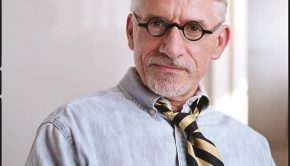Ice Chaser James Balog’s Dramatic Images Document Climate Change
National Geographic photographer James Balog says he was skeptical about climate change until he saw it happening firsthand. Watching once-towering glaciers falling into the sea inspired his most challenging assignment in a storied 30-year career—finding a way to photograph climate change.
In exploring Balog’s Extreme Ice Survey, a breathtaking photographic record of vanishing glaciers, and his award-winning documentary, Chasing Ice, Natural Awakenings asked about the challenges he faced to bring this dramatic evidence of climate change to a world audience.
How did seeing glaciers shrink “before your eyes” move you to endure sometimes life-threatening conditions to get these images on record?
I fell in love with ice decades ago as a young mountaineer and scientist. I loved to get up before dawn and hike out on a glacier in Mount Rainier or one in the Alps, watch the light come up and hear the crunch of the frozen ice underfoot.
On a trip to Iceland early in the project, I was looking at these little diamonds of ice that were left behind on the beach after the glaciers broke up. The surf had polished them into incredible shapes and textures. Walking the beach, you’d realize each one was a unique natural sculpture that existed only for that moment before the return of high tide stole it away. Nobody would ever see it again. That was an amazing aesthetic and metaphysical experience.
I realized that I wanted people to share this experience, to see the glaciers disappearing. This visual manifestation and evidence of climate change is here, happening right before our eyes. It is undeniable.
Why do these photos and videos help us grasp the scale of Planet Earth’s climate changes already underway?
When people encounter Extreme Ice Survey images, their response is typically immediate and dramatic. It is the first step toward caring about a distant landscape most will never experience in person, enabling them to connect the dots between what happens far away and the rising sea levels, extreme weather events and other climate-related issues closer to home.
What can an everyday person do to help underscore the global scientific consensus and urgency of addressing global warming?
Lobbyists and pundits seek confusion and controversy, because ignorance seeks to hide within a noise cloud of false information. As long as the public thinks climate change isn’t real or that science is still debating it, fossil fuel industries protect their profits. Without social clarity, the political leaders financially beholden to fossil fuel industries have no motivation to act. Market signals don’t help us make correct decisions when the military, health and environmental costs of fossil fuels that spread throughout the economic system don’t show up in today’s gasoline prices and electricity bills.
Science and art seek clarity and vision. Clear perception is the key to changing the impact we’re having on our home planet. With social clarity, the policy, economic and technological solutions to wise energy use and countering climate change can be widely implemented. The path forward is being traveled by individuals committed to improving their own lives and communities; by school children who can’t stand the inaction of their elders; by innovative entrepreneurs and corporations eager to make or save money; by military generals seeking to protect their country and their soldiers; and by political leaders of courage and vision. We are all complicit with action or skeptical inaction; we can all participate in solutions to climate change.
What’s next on the horizon for you?
We will continue to keep the Extreme Ice Survey cameras alive. This project doesn’t end just because the film came out. We plan to keep observing the world indefinitely. We’ll install more cameras in Antarctica; funding permitting, we also hope to expand into South America.
I intend to continue looking at human-caused changes in the natural world, which is what I’ve been photographing for 30 years. I’m developing a couple of other big ideas for conveying innovative, artistic and compelling interpretations of the world as it’s changing around us. I will continue doing self-directed educational projects through our new nonprofit, Earth Vision Trust. Overall, I feel a great obligation to preserve a pictorial memory of vanishing landscapes for the people of the future.
Christine MacDonald is a freelance journalist in Washington, D.C., whose specialties include health and science. Visit ChristineMacDonald.info.
<












